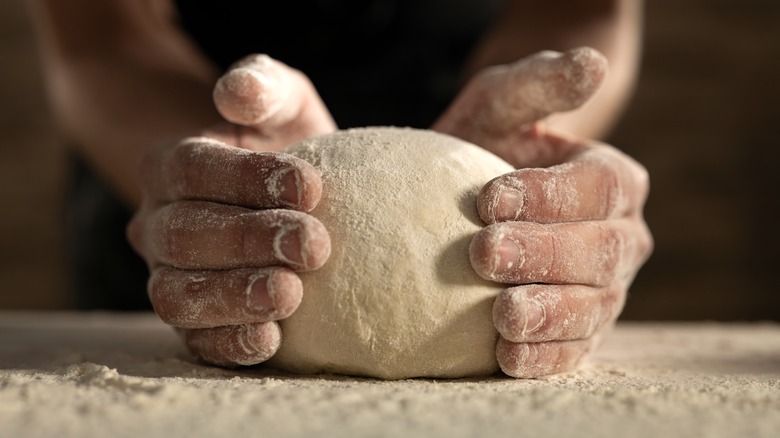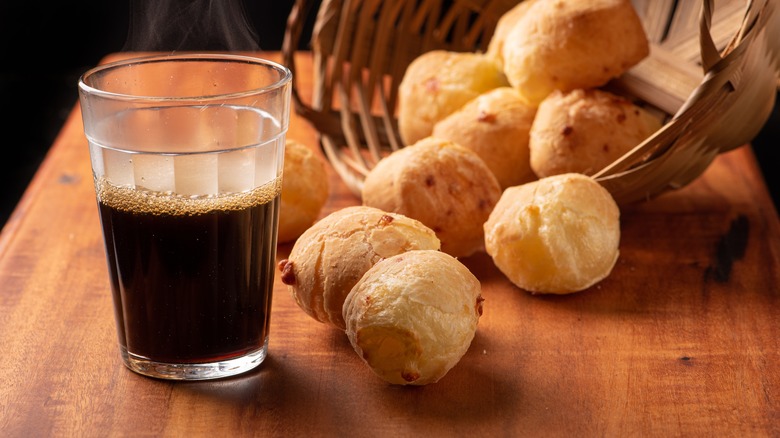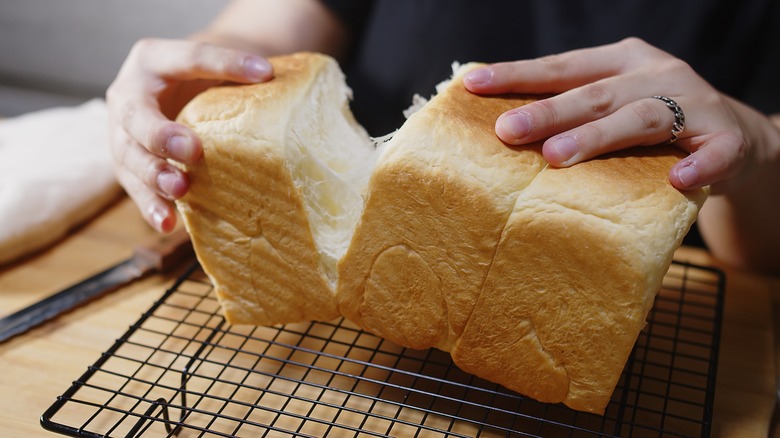The Ideal Time To Substitute Coffee For Water When Making Yeasted Doughs
Whether it be a baguette or a loaf of sourdough, most types of bread are pale on the inside with a golden crust. As for rye, however, it's common to see varieties that are a deep brown color. Unlike pumpernickel and The Cheesecake Factory's famous "brown bread," dark rye doesn't just get its color from molasses or cocoa powder.
The brown hue comes primarily from using brewed coffee instead of water, a centuries-old culinary practice meant to disguise the unappetizing grayish hue that naturally results when you bake rye flour.
Of course, rye bread made without coffee can still be delicious. But as Food & Wine points out, the ingredient adds more than color. It improves the overall texture and flavor of the dough, and this doesn't just apply to rye bread. Any dough that calls for yeast, including cinnamon buns and doughnuts, can benefit from the inclusion of coffee.
When should you add coffee to yeasted dough?
If your goal is to have the coffee flavor come through in your baked goods, coffee extract will work better. But if you want to enhance your dough's pre-existing texture and taste, the beverage form is best.
To incorporate coffee into your yeasted dough, simply swap out the water in the recipe for an equal amount of coffee, and add it when you would normally add the water, advises Food & Wine. Just make sure your coffee is at least room temperature before using it. You'd never use hot water because it kills the yeast, and the same applies to coffee.
When you don't have any brewed coffee on hand, The Good Hearted Woman says instant coffee granules dissolved in water works just as well. No matter which one you go with, the flavor won't be all that different. As Pantry Mama shares, adding coffee to yeasted dough doesn't give it a coffee flavor, but rather a more rich, balanced one.
What happens when you substitute coffee for water in yeasted dough?
Generally, you can substitute water for milk when making yeasted dough because milk is 87% water (via Busby's Bakery). The most notable difference is that it contains lactose and fat, which improves moisture and caramelization. Adding milk to yeasted dough has its advantages, but coffee can completely affect the formation of gluten.
Because coffee is slightly acidic, has the perfect pH to strengthen yet not tighten gluten strands, King Arthur Flour's research and development specialist explained to Food & Wine. With a stronger gluten network, the dough becomes more manageable, and more importantly it has a better rise. This results in bread or pastry that has an improved crumb structure.
The only caveat is the caffeine content, Pantry Mama shares. Too much caffeine will prevent the yeast from properly fermenting. If the yeast is unable to ferment, your dough will produce a closed instead of open crumb. It's best therefore to stay away from espressos and cold brews. (Better yet, just opt for decaf so you can have the acidity without the caffeine.)


